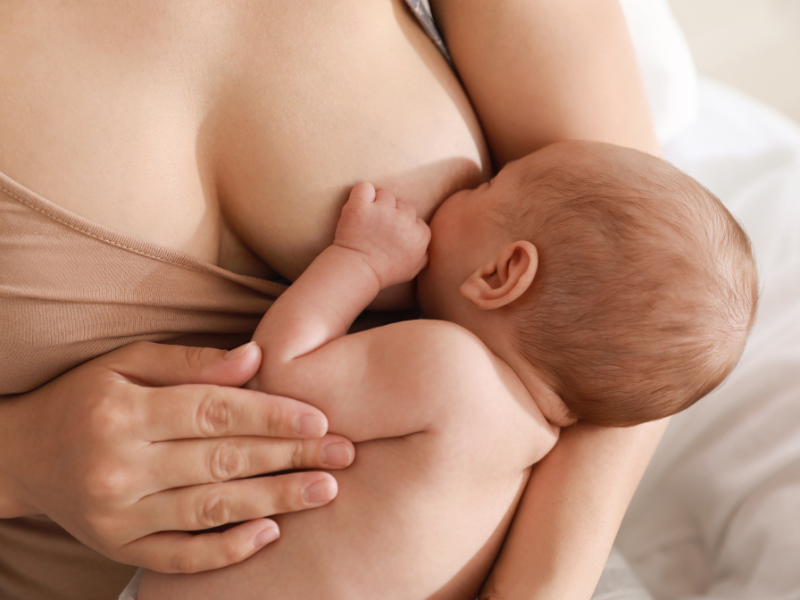Breast Augmentation and Breastfeeding: Understanding the Potential Impact
May-22-2023

Breast augmentation is a surgical procedure that involves the placement of breast implants to enhance the size and shape of the breasts. It is a common question among women considering breast augmentation surgery in Los Angeles whether the procedure will have an impact on their ability to breastfeed in the future. In this article, we will explore the relationship between breast augmentation and breastfeeding, addressing common concerns and providing valuable information for those considering the procedure.
Breast Augmentation and Breastfeeding: What You Need to Know
Breast augmentation surgery, including breast implant placement, typically involves incisions made either around the areola (periareolar), in the crease beneath the breast (inframammary), or in the armpit (transaxillary). The incision location and the implant placement technique can play a role in determining the potential impact on breastfeeding.
Effect on Milk Production
One of the primary concerns regarding breast augmentation and breastfeeding is the potential impact on milk production. It is important to note that the majority of women who undergo breast augmentation surgery can still breastfeed successfully. The surgical procedure itself generally does not directly affect the milk-producing glands or ducts in the breast. However, certain factors related to the surgery may influence breastfeeding.
Incision Placement and Nipple Sensation
The choice of incision placement for breast augmentation can have implications for breastfeeding. The periareolar incision, which is made around the areola, may involve cutting through the milk ducts and could potentially affect milk flow. However, it is worth noting that many women who have undergone breast augmentation through the periareolar incision have still been able to breastfeed successfully. The inframammary and transaxillary incisions are less likely to interfere with breastfeeding.
Another consideration is the impact of breast augmentation on nipple sensation. Some women may experience temporary or permanent changes in nipple sensation following the surgery. Although this does not directly impact breastfeeding, it may affect the overall breastfeeding experience.
Implant Placement and Breastfeeding
The placement of breast implants can also play a role in breastfeeding. Implants placed beneath the chest muscle (submuscular) generally have less impact on breastfeeding compared to implants placed above the muscle (subglandular). Submuscular placement is less likely to interfere with milk production and flow.
Breastfeeding Challenges and Tips
It is important to note that breastfeeding challenges can occur regardless of whether a woman has undergone breast augmentation or not. Factors such as latch issues, low milk supply, and other breastfeeding difficulties are not directly related to breast augmentation. However, it is recommended to discuss your plans for breastfeeding with your surgeon during the consultation process.
To optimize your breastfeeding experience after breast augmentation, consider the following tips:
- Seek support from a lactation consultant who can provide guidance and assistance with breastfeeding techniques.
- Maintain good overall breast health by practicing proper hygiene and addressing any concerns promptly.
- Establish a strong breastfeeding routine and ensure proper latch-on techniques.
- Maintain a healthy diet and lifestyle to support milk production.
Frequently Asked Questions (FAQs)
-
Will breast augmentation surgery affect my ability to breastfeed?
- Breast augmentation surgery generally does not directly impact milk production or the ability to breastfeed. However, certain factors related to the surgery may influence breastfeeding.
-
Which incision placement is the best for breastfeeding?
- The choice of incision placement can vary, but the inframammary and transaxillary incisions are generally considered less likely to interfere with breastfeeding compared to the periareolar incision.
-
Can I breastfeed if I have breast implants?
- Many women with breast implants can still breastfeed successfully. It is recommended to discuss your plans for breastfeeding with your surgeon during the consultation process.
-
Will breast augmentation surgery affect nipple sensation?
- Some women may experience temporary or permanent changes in nipple sensation following breast augmentation surgery. While it may affect the overall breastfeeding experience, it does not directly impact breastfeeding.
-
Are there any tips to optimize breastfeeding after breast augmentation?
- Seeking support from a lactation consultant, maintaining good breast health, establishing a strong breastfeeding routine, and maintaining a healthy lifestyle can help optimize breastfeeding after breast augmentation.
In conclusion, breast augmentation surgery, including implant placement, generally does not directly affect a woman's ability to breastfeed. However, factors such as incision placement, implant location, and nipple sensation changes may have some impact. It is essential to have open discussions with your surgeon and seek support from lactation consultants to optimize your breastfeeding experience after breast augmentation.











Luxe Team